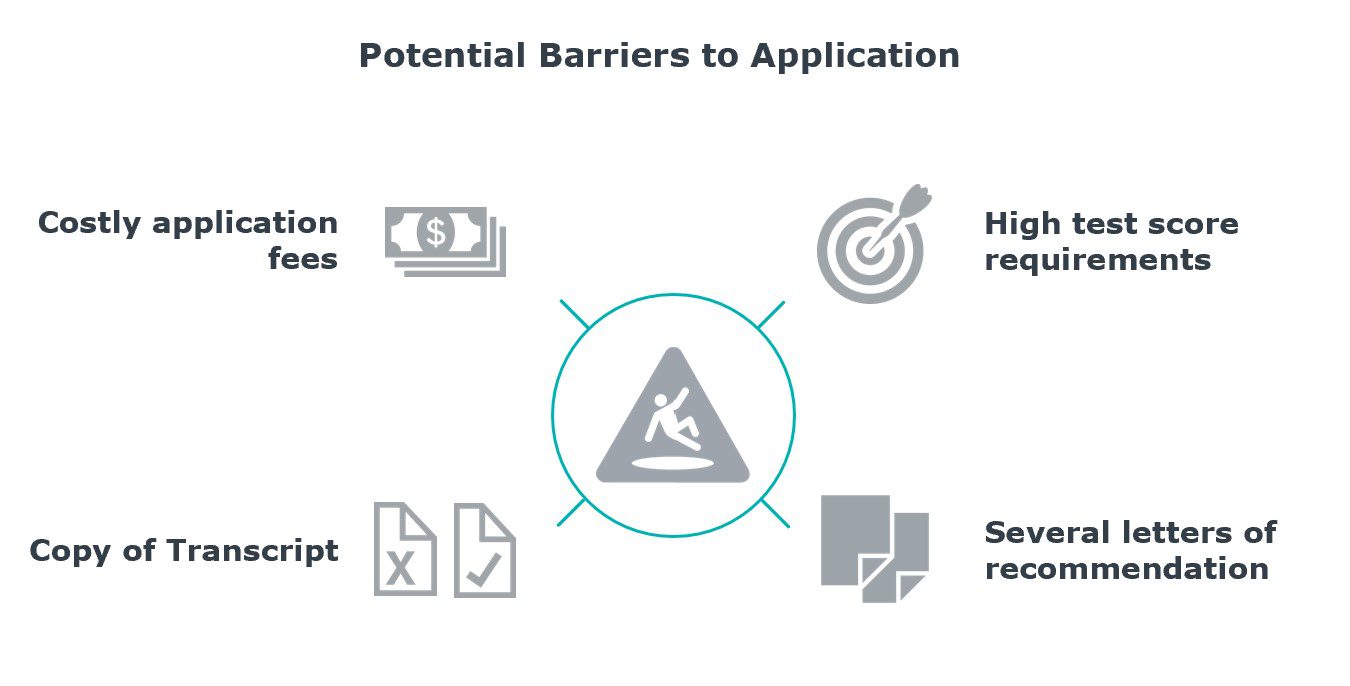5 tips to reach, engage, and enroll a more diverse graduate student body
While Black student enrollment in graduate programs increased in recent years, many enrollment leaders are rightfully concerned about the longevity and sustainability of this trend. And even with this increase, only 11% of graduate students identified as Black in 2020. Declining enrollment among Black students at the undergraduate level also means enrollment leaders will face challenges increasing diversity in their graduate programs for years to come.
-
-22.7%
Undergraduate Black Student Enrollments (Percent change from Fall 2010-2020)
-
+12.9%
Graduate Black Student Enrollments (Percent change from Fall 2010-2020)
-
11.1%
Graduate Enrollments from Black Students (2020)
While the data on Black enrollment represents just a piece of the larger story about diversifying enrollment, our research encourages you to ask two questions: What is preventing students from historically underserved groups from finding your institution? And if they are finding you, what is preventing them from applying and enrolling? This post will explore tips to serve as a starting point.
Ensure students can find your institution easily
Tip #1: Make sure your marketing is reaching your target demographic
To increase the diversity of your graduate student body, you need to first increase the diversity of your prospect pool. But the process of generating your right-fit audience of prospects can be complicated, since most graduate and adult learners are “stealth applicants,” or unknown to your institution until they start an application. Our Adult Learner Recruitment partners grow their prospect pool by incorporating a mix of traditional and new sources into their adult audience generation strategy.
As you focus on expanding your audience sources, make sure you are intentionally reaching diverse candidates by hosting recruitment events at HBCU’s and HSI’s, widening your search parameters to include students beyond your primary market, and taking advantage of diverse corporate partnerships to create a two-way pipeline.
Tip #2: Improve your SEO and website usability
Time is money, especially for adult learners balancing work, family, and researching degree programs. For this reason, among several others, prospective students often fail to look past the first page of search results, which means it is especially important that your program is popping up early in their search for graduate programs. Search engine optimization (SEO), the process of growing the quality and quantity of your website traffic by increasing the visibility of your university’s website in search results, helps ensure prospective students find your institution.
But to show up in a search from diverse students, your website needs to provide a seamless user experience and speak to your specific audience’s interests. Here are some questions your enrollment team should be asking:
- Are our website pages loading quickly?
- Does our content correspond to the topics and interests of our key demographic?
- Does our mission properly express our DEIJ goals?
- Is our website navigation straightforward?
- Does our website meet widely recognized accessibility standards?
LEARN THE SIX THINGS YOUR WEBSITE MIGHT BE MISSING
Provide students with the tools and information they need to apply and enroll
Tip #3: Ensure your marketing is personalized and consistent
As you know, every adult learner’s path to enrollment looks different. Each prospective student has their own unique reasons for returning to school and must balance school with other work and life priorities. Black and Hispanic students also face additional barriers to enrollment, including issues related to affordability and access.
To engage and serve these students, ensure your marketing is personalized to their concerns and consistent so your program does not fall off their radar. For example, consider linking to a tuition calculator on your website and focus on program outcomes in your marketing materials to address students’ concerns about ROI.
Tip #4: Limit application barriers and provide smart alternatives
Diverse populations have historically faced more hardships throughout their lifetime-and higher education is no exception. Whether adults of color are looking to go back to school to pivot in their career, or upskill to get a promotion, it is important to limit potential barriers to application and enrollment.

Consider waiving application fees and replacing test score requirements, transcripts, and letters of recommendation. A good alternative requirement could be a resume, which allows prospective adult learners to showcase the work experiences that make them well-rounded and prepared candidates for your graduate program, and/or offering them the opportunity to write a short personal essay to express their life experiences and goals that lead them to apply today. As a bonus, these alternatives may give you insights into the interests and goals of your adult learners, providing your team with invaluable information that you can incorporate into your program design.
Tip #5: Ensure your students have the support they need
Entering graduate school can be an isolating experience for many students of color, who might find it difficult to imagine being successful at your institution. Creating confidence that your diverse students will be successful can set you apart from competing programs-and turn interest into applications and enrollments. Ensure your website and other marketing materials emphasize the ways in which students will find community and feel supported at your institution.
Examples of Potential Support Systems
- Foster a sense of belonging
- Create Confidence in Ability to Succeed
- Provide Career Support Services
- Communities, clubs and groups
- Events (i.e. cultural nights)
- Diverse and authentic imagery
- Success stories from students and alumni
- Testimonials
- Job placement information
- Advising services
- Representative faculty and staff body
- Networking opportunities

More Blogs

4 questions domestic students will ask before applying to your graduate program

When Grad PLUS disappears: What 8,000+ grad students said about paying for school
